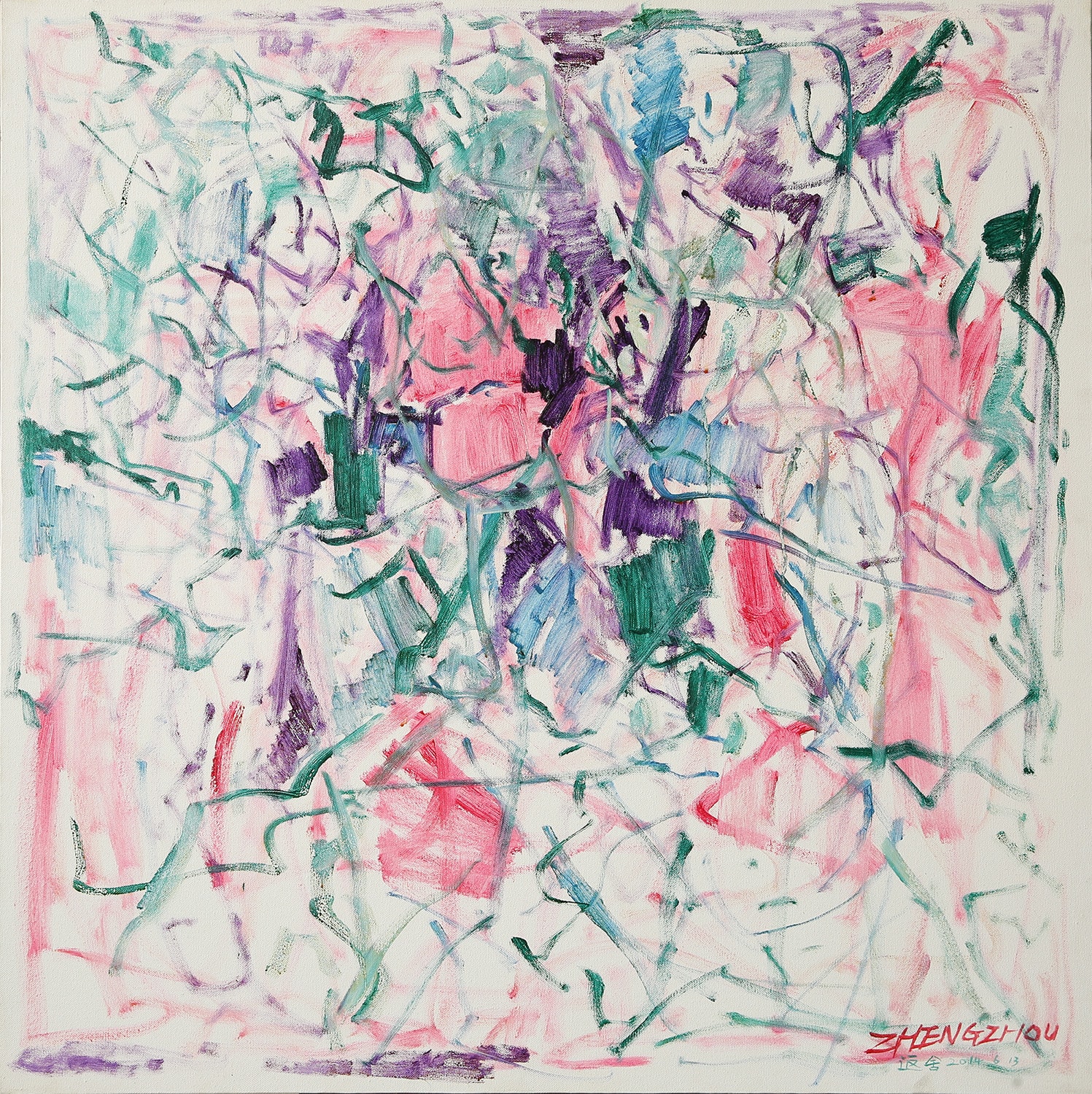Shows
Zheng Zhou’s “2014”


Seeking to break free from the ossified conventions and techniques in academia, where he had remained for 20 years, first as a student and later as an art instructor, Zhejiang-born artist Zheng Zhou experienced a turning point in 2014, when he decided to branch out into a more experimental practice while still utilizing the language of painting—a conversion that echoes the avant-garde art movements of the early 20th century, which marked a shift from the representational to more abstract forms of expression. Paying tribute to this special creative period, “2014,” a solo exhibition at Hong Kong’s Edouard Malingue Gallery presenting 12 of Zheng’s paintings from that year, denotes the deep understanding of realism and abstraction that underlies the artist’s aesthetic experimentation.
Misfortunes is an eye-catching composition of visible brushstrokes and conspicuous colors, depicting two standing silhouettes surrounded by more jagged, bold contours that carry an air of frenetic spontaneity. The figurative elements—reddish-brown and orange faces expressing vague torment, staring eyes, and twisted bodies—are woven into a complex field of intricate symbols and near-abstract forms, portraying human anguish in the face of the titular misfortunes. With a dynamic rhythm recalling Jackson Pollock’s radical manner of applying paint and Fauvism’s strident colors, the piece, like many other influential abstract artworks, communicates with viewers through direct visual impact rather than accurately represented meaningful imagery.
Applying similar styles, Dust in Flourishing Age I also combines
the figurative and the abstract. A nude female reclines in the lower right part of the 110 by 110 cm square canvas, her head invisible to the viewer, while strokes of pale yellows, violets and greens—some of which come together to form recognizable ghostlike bodies or skulls, though most do not—convey a clear sense of turmoil or anxiety even though no specific meanings can be attached. The spectator’s eyes are constantly on the move because there are no traditional realistic linear perspectives and thus no central motif that we can simply cast our focus on. The chaotic strokes of contrasting colors present an unsettling composition with all the force of raging dusts in windstorms, an inescapable environment in which the lone female figure is trapped.

Aside from a clear connection with the action paintings of Jackson Pollock, Lee Krasner and Willem de Kooning, among others, Zheng also explores another element of abstract expressionism—color field paintings. In Forgetting Life and Death and Triptych, the colors Zheng applies are no longer intertwined into a lively whole, but rather separated by geometric blocks that bring to mind Mark Rothko’s paintings. The three stripes comprising Triptych are distinguished by flat, two-dimensional formal elements such as color, shape and composition, while the square canvas also manifests a depth of field with yellow paints as background and apparently random black lines looming in the foreground.
While Mark Rothko abandoned traditional titles for his paintings in 1947, Zheng is obviously more willing to reveal the meanings behind his brushstrokes. It is interesting, then, to see how the difference in title can influence our interpretation of artworks. Composed with similar color blocks, Forgetting Life and Death encourages viewers to consider the two states—how they seem distinct yet also bleed into one another, like the blurred green and orange on the canvas—while the generic title Triptych divulges nothing as to what is represented, forcing viewers to focus on the essence of its visual forms.
Six works juxtaposed together in the inner section of the gallery further demonstrate how Zheng uses titles as a compass for navigating otherwise inscrutable meanings and signs. For example, we may never relate the pink
and cyan colors with peach blossoms and raindrops without the title in Spring Rain Moistens Everything; hanging next to it, Counting Bodies introduces an element of interaction through its title, as if inviting viewers to play a game. While art historian Dennis Phillips criticized the title of Jackson Pollock’s
Blue Poles (1952) for being “too distracting,” causing viewers to “look for the poles and miss much of the rest,” Zheng’s straightforward naming, though potentially limiting the works’ connotations, confidently asserts the artist’s presence and perspective.

Tianhui Huang is an editorial intern of ArtAsiaPacific.
Zheng Zhou’s “2014” is on view at Edouard Malingue Gallery, Hong Kong, until July 12, 2018.







